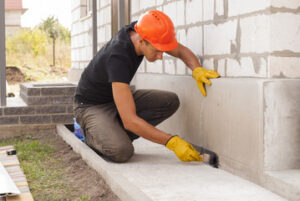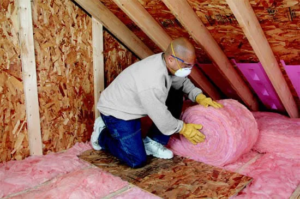Many dental emergencies require emergency care. These include severe tooth pain, fever, swollen glands in the jaw, and a bad taste in the mouth. Typically, these symptoms signal an abscess that requires draining.

Other situations may also be considered dental emergencies. These include soft tissue wounds that compromise the patient’s airway. For professional help, contact Emergency Dentist Las Vegas.
A dental emergency can be caused by a variety of things, including broken or cracked teeth, severe tooth pain, and infection. These problems can be serious and can affect your quality of life. It is important to seek treatment right away. However, many people don’t realize that ERs are not equipped to handle dental emergencies. Instead, they should visit an emergency dentist near them.
ER practitioners are well-trained to deal with general health complaints, such as uncontrolled bleeding, broken facial bones, and injuries to the gums and soft tissues. They may be able to help you stem bleeding, but they are not able to treat the root of the problem. They will often give you painkillers and antibiotics, but they won’t be able to provide a permanent solution to your dental problem.
In addition, ERs are not equipped to deal with the specifics of dental care, such as extractions and root canals. Furthermore, ERs are often overcrowded and busy with other patients. This makes it difficult for them to give you the attention and care you need. In contrast, dentists are trained to deal with dental emergencies and can offer a more immediate, comprehensive solution.
Moreover, a dentist can determine what is causing the problem and provide a long-term fix. For example, if you have a cracked or broken tooth that is painful and sensitive, it may be a sign of an infected root. This can lead to other complications, such as an abscessed tooth. An abscessed tooth is a dangerous condition that requires immediate treatment.
Visiting an emergency dentist can save you from having to pay a lot of money for medical bills in the future. It will also save you from experiencing more pain. Additionally, it can reduce overcrowding in hospital ERs. This will allow emergency room doctors to focus on tackling urgent medical issues. Furthermore, it can also prevent patients from experiencing unnecessary stress.
They are not equipped with the right equipment
If you have a dental emergency, it’s important to get treatment right away. This can help prevent further damage and save money. Emergency dentists can treat a variety of issues, from a chipped tooth to a lost filling. However, they’re not equipped to handle complex procedures, such as root canals. This means that you may need to go to a general dentist or an oral surgeon.
The majority of emergency room (ER) practitioners do not have the skills or equipment to handle dental emergencies. While they can stem bleeding and treat broken bones around the mouth, they cannot provide a permanent solution for dental problems like pain or infection. Instead, they typically prescribe painkillers to numb the discomfort and antibiotics for dental infections. As a result, patients who visit ERs for dental emergencies often return to their dentists later on.
In a recent study, 267 dentists were asked about their experiences with medical emergencies. A statistically significant 72.7% of them reported having ER kits available in their clinics. However, drugs other than sugar sources and oxygen were not as commonly available. Moreover, most dentists did not consider themselves competent in performing cardiopulmonary resuscitation and felt unconfident using ER drugs.
ERs are already overwhelmed with the pressure of treating patients with serious injuries and illnesses. Adding dental emergencies to their care would require them to increase space, install new equipment and hire extra staff. This could strain hospital finances and reduce the amount of care they can offer to other patients. In addition, ERs do not have the equipment and tools required for dental emergencies.
Dental emergencies can be serious, but they’re not necessarily medically urgent. For example, a loose adult tooth can cause lasting nerve and jaw damage. If left untreated, it can also lead to tooth decay and gum disease. Therefore, it’s important to schedule an appointment with an emergency dentist as soon as possible.
Aside from serious dental emergencies, many tooth pains can be addressed at a regular dentist’s office. This is especially true for toothaches caused by an injury or infection. In these cases, you can visit an emergency dentist to receive a same-day treatment that will reduce the severity of your pain. Visiting a dental office rather than an emergency room also reduces costs for the health care system.
They are not able to give patients the best care
When you have a dental emergency, it is important to seek treatment right away. If you wait, the condition will typically get worse, and it may become more expensive to treat. Whether your problem is a painful toothache or a knocked-out tooth, you should visit an emergency dentist as soon as possible to prevent further damage.
While ER practitioners are trained to handle health emergencies, they cannot deal with dental issues like infections or cavities. While they can triage the problem by halting any bleeding, they cannot address the root cause of the issue or provide restorative care. Moreover, if your issue is related to a larger injury, such as a broken jawbone, you should visit an oral surgeon or emergency room.
Tooth pain is a common sign of a dental problem and shouldn’t be ignored, especially if it is accompanied by swelling or pressure sensations. These symptoms may indicate a large cavity, an exposed root, or an infected gum. The best way to relieve the pain is to rinse your mouth with warm salt water and take over-the-counter anti-inflammatories.
A toothache is caused by inflammation of the central portion of the tooth called the pulp, which contains nerve endings that respond to painful stimuli. Infection in the pulp can be caused by dental decay that has eroded the enamel and dentin layers of the tooth, or by trauma to the tooth. If left untreated, the infection can lead to a tooth abscess, which is a severe infection in the root of the tooth that may result in swollen glands, fever, and foul breath.
If you experience a toothache, call your emergency dentist right away. If you don’t have a regular dentist, visit one of the many free or governmental clinics that offer emergency services to residents of the area. You can also find a dentist who accepts payment plans, or attend community events that focus on affordable dental care. You should always look for a dentist who is licensed in your state to ensure that you receive the highest quality of care.
They do not follow up
While ER practitioners may be able to treat some dental emergencies, such as knocked-out teeth or a serious toothache, they can’t help patients with more complicated cases. These include abscesses, severe swelling of the face and gums, bad breath, fever, swollen lymph nodes, and difficulty swallowing. Those experiencing these symptoms should visit an emergency dentist as soon as possible.
Visiting an emergency dentist is often less expensive than visiting an ER, and it offers more comprehensive treatment options. Dentists will assess the patient’s oral and medical history, examine the mouth and teeth, and perform diagnostic imaging to determine the severity of the injury. They will also recommend a follow-up appointment.
Dental emergencies can occur at any time, and many times they’re unavoidable. That’s why it’s important to have a dentist on call, so you can receive immediate care for dental injuries. Emergency dentists are available after hours, weekends, and holidays to handle a variety of dental issues, from broken teeth to abscesses.
If you’re dealing with a dental emergency, it’s important to stay calm and take steps to protect your teeth until you can see a dentist. Rinse your mouth with warm water to clean away debris and soothe inflammation. If a tooth is cracked or chipped, cover it with wax or sugar-free chewing gum to prevent food from getting stuck in the crack. You can also use a cold compress on your cheek to ease pain and reduce swelling.
Many dental offices have a voice mail message that advises patients to call 911 or the emergency room for life-threatening emergencies, but they should also encourage them to contact their dentist for non-life-threatening situations. They can also help their patients prevent future dental emergencies by providing tips on preventing tooth trauma, such as wearing a mouthguard during sports and avoiding hard foods. Patients should also be encouraged to practice good oral hygiene, including regular brushing and flossing. They should also visit their dental office for routine cleanings, which can help prevent cavities and decay. In addition, they should avoid smoking and consuming high-sugar and acidic foods that can cause tooth damage.




